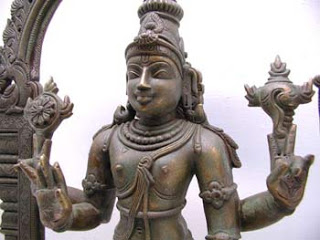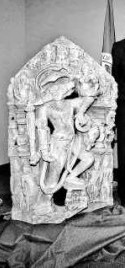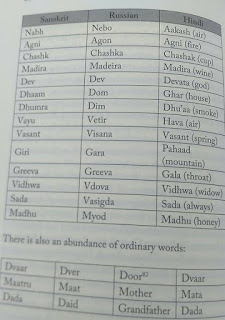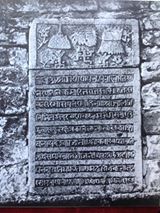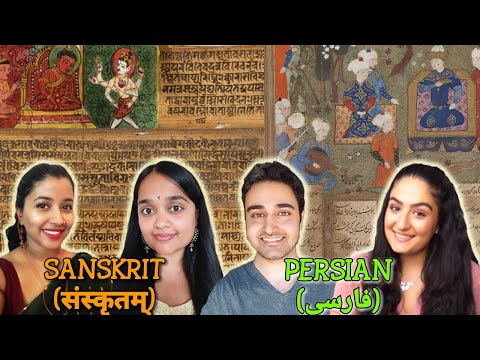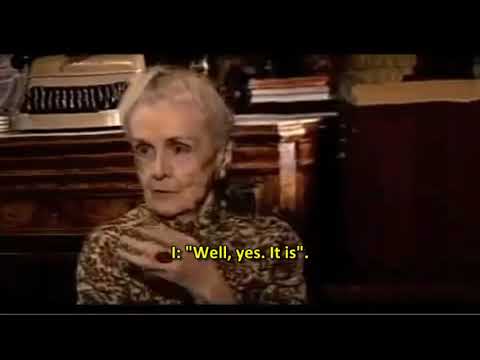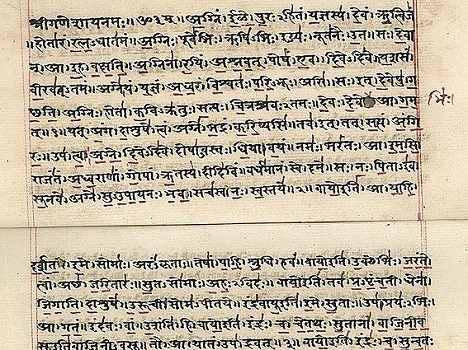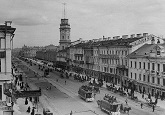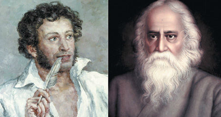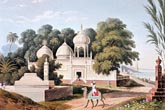Thanks @Soretna , you may find these 2 articles on Vedic influence on Russia very interesting . Moscow city is named after Moskva river , which is a Russian language derivative of "Moksha" meaning salvation , in Sanskrit . The World famous Russian Ballet is the dance of the Vedic Apsaras or semi-divine maidens (often found near lakes and rivers) of the Vedic era , that inhabited the regions to the North of the Indian subcontinent . Some of the Vedic Apsaras (very similar to the "swan maidens" of European folklore) were even described as having "golden coloured" (blonde) hair :-
https://hi-in.facebook.com/Vedicfacts/posts/752992778146553/
10 मई 2015 ·
Vedic influence in Russia
The name Russia i.e. Russi (also spelled as Rishi) is Sanskrit word for a Sage. Thus the term Russia signifies the land of Rishis and Sages.
• Russian phraseology and language also bears close resemblance to Sanskrit. E.g. Daughter-in-law is called Snoka like Sanskrit term for it Snusha. Name Andropov signifies one belonging to the family of Indra (In pronounced as Andro in Russian). The name Lebedev is Sanskrit name Lava-dev, meaning Lava, the son of Lord Rama.
• Name of Moscow has Sanskrit origin, when we change the places of "C" and "S" the name is spelled as Mocsow, which is Sanskrit of "Moksha", meaning salvation, which is the chief goal of life of the Rishis, Sages.
• While the term Soviet comes from the term Svet meaning white (snow-covered) region.
• Term Bolshevik is Sanskrit for Bal-Sevik, signifying Rishis (Sages) who sought to attain (Spiritual or Temporal) power.
• The names of towns ending with "Grad" are from Sanskrit "Graam".
• In Caspian Sea there is a busy port of Baku, where you find a temple of Goddess of Effulgence (Jwalamai). Buried under the heap of ashes are inscriptions left by Vedic Fire Worshippers. On the walls of the temple the sacred Gayatri Mantra is written in Devanagri Script. Even up to World War II a lone Vedic monk would station himself there in the austere surroundings to maintain the place. Local Indian Hindu merchants would bring donations for the upkeep of the temple and the monk. There may be many such Vedic Temple scattered in Russia now camouflaged as Christian Churches.
• In 30th August 1982, a Times of India publication published a discovery, a stone carving depiction a Vedic Chariot in the Region of Tajikistan.
Ancient Vedic Sages lived along with their disciples in the caves, which were hand carved just like you find in India in the Armenian Republic.
• In 27th November 1983 the Indian Express published about the Vedic remains in Russia. When Soviet archaeologists stumbled on the remains of a giant
• The mystical bird of Gandabherunda is featured in the emblem of Russia. The compound name is made of ganda,the mighty, and bherunda meaning "two headed".Its origin has been traced in hoary past in different ancient civilizations, more than 4,000 years back. The concept of two headed bird existed among Hittites, Egyptians and Sumerians as well as Hindus. The first human beings pondered over the regular movement of the Sun, tree of life and big birds soaring high in the sky all the time. This idea developed perhaps, into a celestial bird, watching in all directions.
Buddhist Cave-monastery in the Kara-Tepe hill during excavation-work in Termez in Uzbekistan, fresh light was once again thrown on the possibility of cultural relation-ship between Soviet Central Asia and India.
• The Russians also knew Ayurveda, the Vedic medicinal science. The Sanskrit text of Ashtang Ayurveda was discovered in Russia, along with a bronze image of the Vedic deity of longevity, is on display at the international academy of Indian Culture, 22-Hauz Khas Road, New Delhi. Also, people of Siberia are conversant with the preparation of Ayurvedic medicines like Triphala, Hingashtak powders. Due to the inhospitable Siberian region Christianity was unable to penetrate easily into the region thus people of Siberia were still able to preserve the knowledge.
• The word Siberia is still pronounced by local people as Shibir, which is exact Sanskrit word meaning encampment or temporary habitation.
• In the town of Samarkand there is a palatial building housing the grave of conqueror Tamerlian, confusion exists about the building whether it was a Muslim building or an earlier Vedic Building of the earlier rulers. Because at the entrance there are pictures or images of Sun and Tiger, which local guides still call "Soor-Sadul" meaning Surya-Shardul which could very well be the emblem of the Vedic rulers.
• There exist Russian Veda which is exactly like our Vedas in which the central figure is the figure called Krishen, it has the same stories of that of Bhagavad-Puran, where he kills many demons including the witch, and snake exactly like Putna and Agasura.
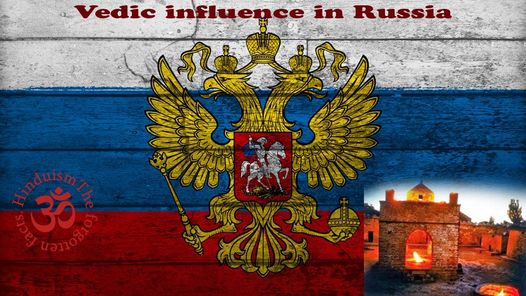
https://www.facebook.com/notes/the-unknown-world-bramhalay/the-russian-veda/1745802315656297/
THE RUSSIAN VEDA
AMARENDRA SINGH·[TUESDAY, 3 MAY 2016]
:by James Robinson Cooper
While travelling throughout Russia, the great Vaisnava saint Indradyumna Marharaj met with professor Medvedev, chairman of the religious affairs committee. The irony of the professor’s name was not lost on Indradyumna Marharaj, he could immediately recognise its Sanskrit/Vedic influence. Medvedev is a common Russian word which according to academia means bear. The source of this name however is Vedic, medevedev is Madhavadeva, Madhava being a name for Krsna and deva a Sanskrit word meaning ‘God’. Madhava comes from the word madhuwhich means ‘honey’ andmadhava means ‘one who intoxicates like bees around honey’. As well as bees we find others who are also attracted to honey, namely bears. The word medvedev means ‘honey eater’, so thousands of years ago the people who lived in this part of the world used a Vedic/Sanskrit terminology to describe one of the prominent characteristics of the bear, and thousands of years later madhavadeva had become Professor Medvedev, the chairman of religious affairs in Russia.
During the conversation Professor Medvedev surprised Marharaj saying "The problem amongst our leaders may not be so much in having to accept your movement but in accepting that this Vedic culture may have been the original culture of Russia. In Russia practically all scientists accept that Vedic culture once flourished here, the centre being in the Volga river region. The debate amongst our scientists is whether the Aryans came from India or if they originated here. There is much evidence that the Vedic culture existed here, most notably the ‘Russian Veda’." Intrigued Marharaj asked the professor to explain more about this ‘Russian Veda’. "It is famous amongst our people" Professor Medvedev continued, "It is as old as Russia and the stories are exactly like those found in the Vedic scriptures. The central figure of the Russian Veda is a personality called Krishen, he is the upholder of spiritual truths and the killer of many demons. His killing of a witch and a snake are exactly like the history of child Krsna killing the Putana and Aghasura demons in the Bhagavat Purana. The ‘Russian Veda’ is not for children, it’s full of spiritual truths. This Vedic culture was once prevalent throughout the world."
The ‘Russian Veda’ mentioned by Professor Medvedev was part of a culture which went beyond Russia, a culture which was prominent amongst the Slavic people who were the largest ethnic and linguistic group of people throughout Europe. Their civilization is described as Indo/European and was spread throughout Russia, Poland, Ukraine, Serbia, Czechoslovakia, Bulgaria, Belorussia, Croatia, Slovakia, and Macedonia. The origins of these people go back thousands of years to the time of their Gods Tarkh and Tara. Tarkh was known as the guardian of ancient wisdom and his sister was the beautiful Goddess golden Tara. The Slavic people are known as the children of Tarkh and Tara and from the names of Tarkh and Tara came the great empire known as the Tar-tar-y.
The Russian language contains numerous words which are cognate with Sanskrit. Please keep in mind that almost all languages are originally phonetic as they pass from an oral tradition to a written one, and when comparing two languages the sound of the word as well as its morphological structure should be taken into consideration.
The deities of the Slavic world were worshipped widely in Russia and very much reflect the Devas of the Vedas.
Yndra is known as the supreme thunder God, the hero in the battles to protect Svarga Loka (heaven) and the controller of rain. Yndra is quite obviously Lord Indra, the King of heaven and the great demigod of the Vedas.
Morana is their Goddess of death, also known as Mora, Marana is the Vedic Goddess of death, also known as Mara. It is reasonable to conclude they are one and the same.
In the Vedas we have Maya who is the personification of this material realm, the regulatrix of this universe, in Slavic folklore we find Maya who is one of the divine forces of nature and one of the most revered of the Gods.
Makosh is known as the mother of destiny, and the archeological evidence dates her existence to over 2,500 years. Ma is the Sanskrit matr meaning ‘mother’ and kosh is the Sanskrit kosa meaning ‘treasury’, ‘accumulated wealth’ and ‘provisions’. Makosh holds the horn of plenty and provides for those who are righteous. She has two daughters, Dolya and Nedolya, known respectively as ‘fate’ and ‘doom’. Dolya is known to hound you if you make the wrong choice, her name comes from the Sanskrit doloya which means ‘to be doubtful and uncertain’ and also dola which means ‘swinging’, ‘oscillating’. Ne is simply the Sanskrit na meaning ‘none’, so no-dolya, ‘no fate’, ‘no fortune’.
The patron Goddess of life and souls is called Jiva or Ziva and this is simply the Sanskrit word jiva which means ‘soul’, ‘living’, ‘existence’.
The Slavic God of light is Svantovich whose name is from the Sanskrit Svar meaning ‘light’. In the old picture’s we see the Slavic God named Kryshen playing his flute for the pleasure of his wife whose name is Rada. According to the Slavic tradition Kryshen journeys to the island of the Sun, described as the Greek island of Rhodes. There he meets the beautiful daughter of the Sun God her name being Rada. In the Vedas RadhaKrsna are known as the highest realization of the absolute truth, they are the two complimentary aspects of the one absolute truth. This is not the first time the island of Rhodes has been associated with the name of Radha, some suggesting her to be the source of its name. The story continues that after successfully satisfying the demands of her father, Kryshen wins the hand of his daughter. Kryshen is also known as the shepherd, the protector of cows and bulls, which is obviously Gopal Krsna the lover of the cows.
In the Slavic tradition we find many deities where their names end with the suffix bog, as in Belbog, Stribog, Ognebog and Dazhbog. This is similar to the Vedic suffix deva, as in Indradeva, Suryadeva and Gangadevi. The origin of the suffix bog is the Sanskrit bhaga which is Bhagavan the ‘Supreme Lord’. Ognebog is Agni Bhaga the Vedic God of fire, Belbog may be Bhalu Bhaga the God of the Sun, we see this name throughout the world as Bhalu, Bel and Bal, especially throughout the middle east, and it is mentioned throughout the Bible as the God Bal, the God of the Sun. Dazhbog is the God of giving, in Sanskrit we have da and dana which means ‘giving’, ‘donating’, and this seems to be the source of the name Dazh.
The laws of Rita are part of the Slavic tradition, in Sanskrit we have the same word Rta which means ‘righteousness’, Dharma. Throughout the world we find this Sanskrit word. Amongst the Greeks, many of their warriors and Kings had this Rta as a common prefix declaring themselves to be righteous. Artaphernes was the brother of the great King Darius of Persia, his name is two Sanskrit words, rta and varnas. The Greeks were always fond of adding an ‘A’ to names and so what was originally rta becomes ‘Arta’ and the ‘Phernes’ is from the Persian farnas which means ‘qualities’, and this in turn comes from the Sanskrit varnas meaning the same thing, Artaphernes being the ‘quality’ or ‘glory of righteousness’. Other Kings who had this name were Artabanos - Artabazus - Artabryzana - Artosyras - Artaxias and Artambare to name a few.
Baba Yoga , known also as Baba Yaga and Mother Yoginya was a yogini and great mystical sage of the forest. Baba Yoga belongs to a time when Brahmanas and Druids lived in the forests. In the Vedic tradition retired life was called Vanaprastha which means ‘retiring to the forest’, vana meaning ‘forest’ and prastha meaning ‘to go’, ‘proceed’. (In English, the prefix pro which we find in ‘proceed’ is actually from the Sanskrit pra which means ‘to go forth’.) Thousands of years ago the forests of Bharata (India) was the home of Brahmanas. Along the sacred rivers of the Ganga, Yamuna, Sarasvati, Godavari, Kaveri, thousands of ashrams would wind their way up to the snowy peaks of Himalaya. Thousands of ashramas, thousands of spiritual teachers and perhaps millions of Brahmanas, all part of what was once a land of enchantment. Baba Yoga was a great friend of orphaned children, she would take them to her temple within the forest and teach them the sacred lore. When the children became adults they would leave the forest and lead normal lives nourished by the teachings of Baba Yoga.
The Samodivas are described as young women with golden hair carrying bows and arrows while riding throughout the woods upon deer. They are known as the guardians of the earth, immortals and with their healing abilities they restore sick and wounded animals back to health. They have an affinity with fire, they can produce it at will and they live in huge trees. Apparently there is another, dangerous side to them, however this may be due to later propaganda from Christian Europe. The diva in Samodiva is either the Sanskrit diva meaning ‘heaven’ or deva meaning ‘divine’, ‘God’. The samo seems to come from the Sami tree - at one time fire was produced by rubbing together the branches of a tree and the wood from the Sami tree was used for sacrificial fires. The Samodivas had an affinity for fire, they could produce it at will and they lived in trees so the Sami tree may be the source of their name.
Pater Diy is described as the protector of hidden wisdom. Pater is the Sanskrit pitR meaning ‘father’, ‘Lord’, and diy may be the Sanskrit dhi meaning ‘wisdom’, ‘knowledge’ – ‘the lord of wisdom’. The Druids worshipped this God as Pater Dis.
Devana was known as the Goddess of the forest, her name is pure Sanskrit, deva meaning God and vana meaning forest – the ‘God of the forest’. Vanapagan is known as the ‘devil of the forest’, the ‘devil of the underground’, his name once again reflects this Sanskrit vana meaning ‘forest’. Veles is the Vedic God Vala. Veles is the God of the underworld, Vala is the God of the underworld, Veles is a serpent, Vala is a serpent, they seem to be one and the same. At one time in the ancient past the Slavic people spread throughout Europe and into the British Isles leaving their impressions upon Scotland and Wales. There are some that say that the name Wales comes from the name Veles, the Anglo Saxons refer to the lands as Wealas. And when we consider the spoken V invariably becomes the written W, Vales and Vaeles seems pretty close to the name Wales.
Mater Sva is described as the mother of the Slavs, indeed her other name is Slava which may well be the source of the name for the Slavic people. Mater Sva appears as a beautiful flame coloured bird, known as the bird of the Sun. Mater is simply the Sanskrit matr meaning ‘mother’ and sva is Sanskrit svar meaning the ‘Sun’ and ‘heaven’. Mater Sva is a solar Goddess whose name means the ‘Mother of the Sun’ and this of course is consistent with her being the mother of Svarog who is the God of celestial fire and the father of Dazhbog. His name comes from the Sanskrit svar which means the ‘sun’, ‘lustre’, ‘light’, and can also mean ‘heaven’. Domovoy in Slavic folklore is said to be the the house spirit, the protector of the home. Dom comes from the Sanskrit dam meaning ‘house’ as in Dampati meaning the ‘lord of the house’. We see this Sanskrit word in English term King-dom meaning the ‘house of the King’ and Dom-estic meaning ‘home’.
Dajd Bog as previously mentioned is the guardian of ancient wisdom, known as the giving God, providing his people with the Santi Veda. Dajd comes from the Sanskrit words da and dana which both mean ‘to give’. The Santi Veda comes from Sanskrit, santi meaning ‘peace’ and veda meaning ‘knowledge’ - the ‘knowledge of peace’. His sister is the beautiful golden Tara , together they cultivate the land for their people to live on. Tara pacifies the trees which are about to be cut and shows how to replace them. It is said that the Tartary Empire bears their name, the Slavic people being the children of Tarkh and Tara, hence the name Tar-tar-y. In Siberia there was once a great temple complex glorifying Tara as well as a city built in her name, and a river Tara which flows in her memory.
The Kolovrat is a Slavik symbol similar to the Swastika. It’s related to the Sun God Svarog, whose name is once again derived from a Sanskrit word, svar being Sanskrit for ‘sun’. Just as the Sun is symbolic for time, its rising and setting manifesting our days and nights, the Kolovrat, amongst other things, seems to be a symbol of time. In the Vedas we have the kAlacakra, ‘the wheel of time’, and the Kolovrat seems to be a similar concept. Kolo seems to be a corruption of kala, in Sanskrit ‘era’ and vrat is the Sanskrit vrt or vart meaning ‘to turn’, ‘revolve’. Kolovrat means the ‘wheel of time’.
We see this vrt or vart in English words too, they simply replace the ‘a’ with an ‘e’ and vart becomes the suffix vert as in divert, subvert, convert, pervert, revert, etc., and the meaning is the same – ‘to turn’.
The same Kolo we find in Kolovrat we may see reflected in Koliada, the Slavic end of the year festival which was renamed Christmas. Koli is kala the Sanskrit word for time, and da is the Sanskrit word for giving which is seen in dana, dadati, dani, etc., Its a name which does seem to reflect the nature of the festival. In the Slavik country of Belorussia it is actually called Kalada which is pure Sanskrit for ‘a time for giving’. In Lithuania it is called Kaleda, and in Bosnia, Croatia, Czechoslovakia and Sloven it is called Koliada or Koleda, which reflects the different spellings and how the spoken word may have once been Kalada, ‘the time for giving’.
At the beginning of this article, I mentioned how Professor Medvedev said that at one time the Volga river region was the centre for Vedic culture. This Volga was originally called Rasa, a Sanskrit name which means ‘water’, ‘juice’, ‘elixir’, ‘essence’, ‘nectar’, ‘love’. Its name represents a pre industrial Russia, a time when everyone and everything was connected with nature and her environment. In his book The legends of the Phoenix Alexey Trekhlebov says, "Volga was also called Rsa or Rasa ". Elena Kuzmina writes in her book The origin of the Indo/Iranians, "The common name for the sacred river Volga was Ra - Indian Rasa - Avestan Ranha", and George Erdosy writes in The Indo/Aryans of ancient South Asia, "Thus the mythical Indo/Iranian river corresponds to the Vedic Rasa, the East Iranian Ranha and the North Iranian Raha, which is preserved in Greek as Rha wherever it designates the Volga river". We should also take note of the Iranian tendency to turn a Sanskrit ‘S’ into an Iranian ‘H’ and so the Iranian name of Raha for the Volga river was most probably taken from the Vedic/Sanskrit rasa. The Greek Historian Herodotus called the Volga river the Araxes which if we take away the Greek tendency to add an ‘A’ at the beginning and if we convert the ‘X’ into the ‘S’, this once again gives us rasa. The Greco/Egyptian writer Ptolemy also describes the river Volga as the river Rha. So whether it was Ra or Rasa they are both Sanskrit names and they both reflect the culture of the time.
Another river which roars across the lands of Russia is the Kama river, a Sanskrit word kama meaning ‘love’, ‘desire’, ‘beauty’, ‘pleasure’ - she conveniently pours herself into the river Rasa eg. Volga, and overflows her banks. Onwards they travel rushing ever faster towards the source of Russia’s Vedic culture, the Caspian sea, named after the great Vedic sage Kashyapa Muni. As well as the Kama river, we also have the river Samara, the river Sura and the river Saratov which all flow into this Volga and are all Sanskrit names.
In the Ural regions we have the renamed Mount Narodanya, its original name was Narada named after the another of great Vedic sages. The locals knew it as Narada and running alongside this mountain is the river Naroda, which once again was originally called Narada. This Narada river then flows into the river Pichora which is a Sanskrit word meaning ‘flute’ which is quite appropriate when we consider the relationship between Krsna and Narada. The Pichora river then flows into the river Usha, Usha being the Vedic Goddess of the dawn.
The river Danube is very much a part of the ancient Slavic culture, it flows through many countries including the Ukraine. The source of this name is the Vedic Goddess Devi Danu, the wife of Kashyapa Muni of whom the Caspian sea is so named. The river Don which flows throughout Russia gets its name from Sanskrit danu, meaning ‘fluid’, ‘dew’, ‘drop’, as well as ‘prosperity’. So does the river Dnieper which was previously called the Dnipro, and before that the Dnapara, and finally the Danu Apara, Apara a Sanskrit word meaning ‘boundless’, ‘unlimited’, and danu as previously described. The Dniester also has its prominent position in Russian/Slavic folklore, its name being a combination of the danu and the river Ister.
In India we have the suffix pur or puri which means ‘fort’, ‘town’, ‘city’ and can also mean ‘river’ as at one time forts, towns and cities were built next to rivers. Throughout India we see this in names of places such as Jagganath Puri and Hastinarpur. In Russia we have the Pur river which starts at the confluence of the Pryakpur and Aivasedapur rivers, all of which have this Sanskrit suffix pur. The Pryakpur river also has two tributaries called the Vyangapur and Purpe rivers once again expressing this Sanskrit suffix pur. We also have the Apakapur river which is a tributary of the Vyangapur, and the Puritey river which is a tributary of the Purpe river, and to this list we can also add the Goensapur river. Pur and puri as a suffix are exclusive to Sanskrit/Vedic/Indian culture, yet here in Russia we have a group of rivers and tributaries which have as their suffix the Sanskrit suffix pur. On its own this may be seen as an anomaly, but looking from a broader perspective, it is yet more evidence of the Vedic culture which once pervaded Russia.
And from this list, we should not omit to mention that in Perm Russia we have the Surya river. Now just think about that for a moment, this is not a misspelling or something which has come about by accident. Surya is one million per cent Vedic, this word belongs to no other culture than Vedic India, it is a name which belongs nowhere else and describes the personality behind the Sun, the Vedic Sun God Surya. Other names of rivers we find floating throughout Russia are the Moksha river, the rivers Maya, Kuma, Ravan, Siva, Sita, Upa, Danube, Dniester, Dnieper, Don, Siversky, Kara, Mana, Avacha, Dvina, Narada, Pichora, Kama, Samara, Sara, Vishera, Varonya, Angara, Pasha, Sura, Suna, Kala, Vaja, Valgu, Ira, Usa, Krasnaya, Padma, Sagora, Oka, Sukhana, Indola, Indomanka, Sindosa, Varna, the river OM and numerous others whose names would fit neatly in any Sanskrit dictionary.
Many names in the Russian/Slavic language end with the suffix mir which comes from the old Slavic meru which is the cosmic axial mountain of the Vedas. According to the Vedas there exists a subtle multi dimensional mountain which rises up through the centre of this universe and on top is the home of the Gods, known in various cultures as Brahmaloka, Asgard and Mount Olympus. As well as meaning ‘peace’ mir also means ‘great’, ‘world’, ‘universe’ all of which reflects the nature of this great cosmic mountain. Dragmir is one example, drag meaning ‘precious’ and mir/meru meaning ‘great’. One of the early Slavic chieftans was Mezamir, another endowed with the epithet ‘great’ in his name. Vladimir is a popular Russian name, vlad meaning ‘to rule’ and Mir being Meru meaning ‘great’, ‘great ruler’. Other names whose suffix is derived from this Vedic mount Meru are Branimira, Dobromira, Krasimira, Lubomira, Stanimira, Velmira, Lyubomir, Radomir, Vitomir, Zlatomir and many others.
In Siberia we also have the mountain, a reflection of the great cosmic mount Sumeru - Belukha. Amidst the golden mountains of Altai which stretch across Russia, Mongolia, China and Kazhakstan, it is the highest peak called Mount Belukha. Belukha is the heart of Siberia, seen as a mystical mountain, a source of magic and cosmic wisdom. Its original name was Uch-Sumer and the east Kalmuck people who lived there believed that the world is centred upon a great cosmic mountain called Sumer, which is of course the great cosmic mount Sumeru, and which once again shows how before the curtains were closed during the dark ages, the ancient Vedic culture was spread throughout the world, including Russia.
Regards


